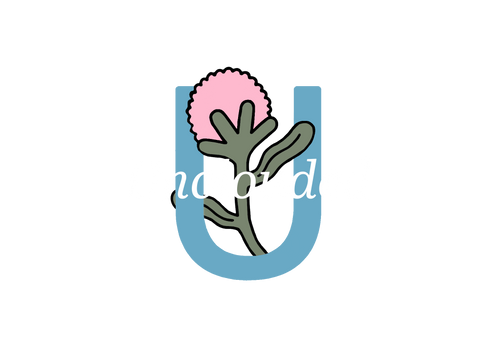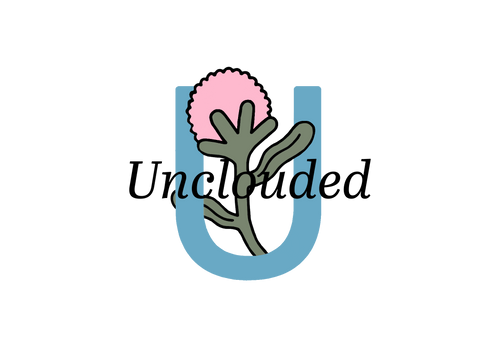Box braids are a popular choice for people looking to add volume to their natural hair. They're also known to cause itching on the scalp. Here's how to treat the problem.
Why does my scalp itch from braids and how can I stop it?
Have you recently gotten a protective style with synthetic hair, and your scalp is itching?
There's a few reasons as to why this could be happening. There's an old folk tale that tells us that it's from the tightness of the braids, and that after a few days it'll go away.... but it's been about a week, and your scalp is still itching, so what is going on? If you notice red bumps and/or a rash, remove the style from your head. Your natural hair and the health of your scalp is not worth any style.
Causes
Your scalp can itch while under a protective style for several reasons.
-
An Allergic Reaction
An allergic reaction is fairly common if you wear synthetic or synthetic blend hair extensions. If you notice red bumps and/or a rash, remove the style from your head, you are having an allergic reaction. Your natural hair and the health of your scalp is not worth any style. After all, a protective style should protect! You may also notice itching on your scalp, neck, chest, and any areas your extensions are touching your skin.
There's a few reasons you could be having an allergic reaction. You could be having an allergic reaction to kenekalon hair, which is a type of fiber that is also treated with an alkaline preservative.
It's very important to note that just because you have an allergic reaction to the hair, doesn't mean you are necessarily allergic to the synthetic fibers, but to the chemicals that are placed on the hair as a preservative. A preservative is placed on the hair to prevent the growth of yeast and bacteria. A lot of women keep their protective styles in for weeks to months, and when you wash your braid and are in wet environments, without a preservative, you are opening the door up for bacteria to grow, if not properly dried. When you braid your hair with extensions, your scalp absorbs the chemicals that were put on the hair, which is TOXIC!
At Unclouded, we are the only and the first company to apply a 100% organic conditioner & preservative to our synthetic hair.
If you check out the "Our Ingredients" page, we disclose the core ingredients we use on our synthetic hair. Our hair not only organically protects your scalp from the growth of bacteria and yeast, but all those ingredients, such as grapeseed oil, Vitamin E, Aloe Vera, etc., transfer over to your scalp to help lock in the moisture your scalp needs.
-
Dry Scalp/Exposed Scalp
Protective styles are a perfect way to give yourself a break from your natural hair maintenance, however it's important to oil your scalp once to twice daily. When your scalp is exposed, it can be naturally extra drying. If you have gotten a protective style and haven't oiled your scalp, that could very well be the cause to your itching. You can also apply Witch Hazel to your scalp to soothe the itching. Make sure follow up with fast absorbing such as rose hip oil, vitamin E, almond oil, and jojoba oil. We then recommend following up with a heavier oil such as Jamaican black castor oil (pssst. the mango one smells so good), grapeseed oil, peppermint oil, rosemary oil, and morrocan pear oil. Castor oil is our particular favorite in combination with peppermint because the castor oil will sit without having your scalp feeling oily (just use a little bit) and the peppermint oil will give you that tingling feeling as it's reduce redness and inflammation.
The fibers of the braiding hair can also dry your scalp out, especially if the hair isn't treated properly.
-
Dirt & buildup
If you've had your protective style for some time, and your scalp just started to itch, we recommend giving your hair a wash. You do not need to take the style out to wash your hair, and we do recommend washing your scalp every 2-3 weeks that you have your style in. If you work out or are often in water, you may need to wash your hair more frequently. Using a shampoo that has a detox in it such as Apple Cider Vinegar can remove the buildup that's developed from your new growth. When you are washing your braids, focus on your scalp, and gently rub your scalp, there's no need to lather it vigorously, the water will move the shampoo through the rest of your hair.
-
Tension from Tightness
Let's loosen them braids up! A lot of braiders have a tight grip and it can very well be possible that your scalp is itching from the tension. As we mentioned earlier, there's an old folktale that tells us "the tighter the braids, the longer they'll last", and although we all want our protective style to last as long as possible, tension can cause more issues. When you're braids are too tight it can lead to excessive hair loss, hair thinning, and balding.
If your scalp is hurting during your installation, tell your stylist that they are too tight. Any stylist should be able to accommodate to your comfortability. If they can't then perhaps they are not the stylist for you, because the integrity of your natural hair and scalp is far more important than a tight style.
What if I like a specific texture for my braiding hair?
We have recently launched our braiding hair treatment, which consists of a shampoo and a conditioner. This treatment is 100% organic and can be used on your natural hair and your braids. Our duo is currently the only braiding hair treatment on the market that removes toxic chemicals from several braiding hair brands, and then re-preserves the hair organically.
The shampoo should always be applied to your braiding hair prior to your appointment to remove any preservative, alkaline, and chemicals from the hair. Simply get lukewarm-warm water and thoroughly apply the shampoo on your bundles. Once the shampoo is applied, let the hair sit in the water for a minimum of 45 minutes to an hour.
Rinse the hair off with clean lukewarm to warm water and then apply the braiding hair conditioner.
This conditioner serves as an organic preservative for the hair to restore shine, silkiness, and longevity of the hair. It also prevents the growth of bacteria and yeast, making your hair ready for any water activities.It's crucial that once the conditioner is applied to the hair that you allow it to sit in warm water (not boiling hot) for a minimum of 10 minutes to allow the ingredients to penetrate the fibers of the hair. Once completed you may take the hair our and allow the hair to air dry or blow dry it.
Unclouded's Braiding Hair Treatment is a great way to make your braiding hair hypoallergenic and offers a wide arrays of colors and textures of non toxic braiding hair. Say goodbye to scalp irritation, and hello to an effortless way of installing braids. Hypoallergenic braiding hair won't cause red bumps on the scalp, itching, hair loss, hair thinning, or any negative symptoms.
How often should I clean my braids?
You should be cleaning your braids and scalp every week and a half to two weeks. You can also use the braiding hair treatment duo for cleaning them. The shampoo will cleanse any build up that has occurred at the root of your braids, and the braiding hair conditioner will moisturize the synthetic fibers again. The conditioner will also moisturizer your hair & scalp with the nutrients that it needs. Follow up your wash day with an essential oil once dried.
Natural methods to cleaning your scalp and braids are made more readily accessible. Unclouded provides options for those that like to diy, or those who want their hair ready for installation.

